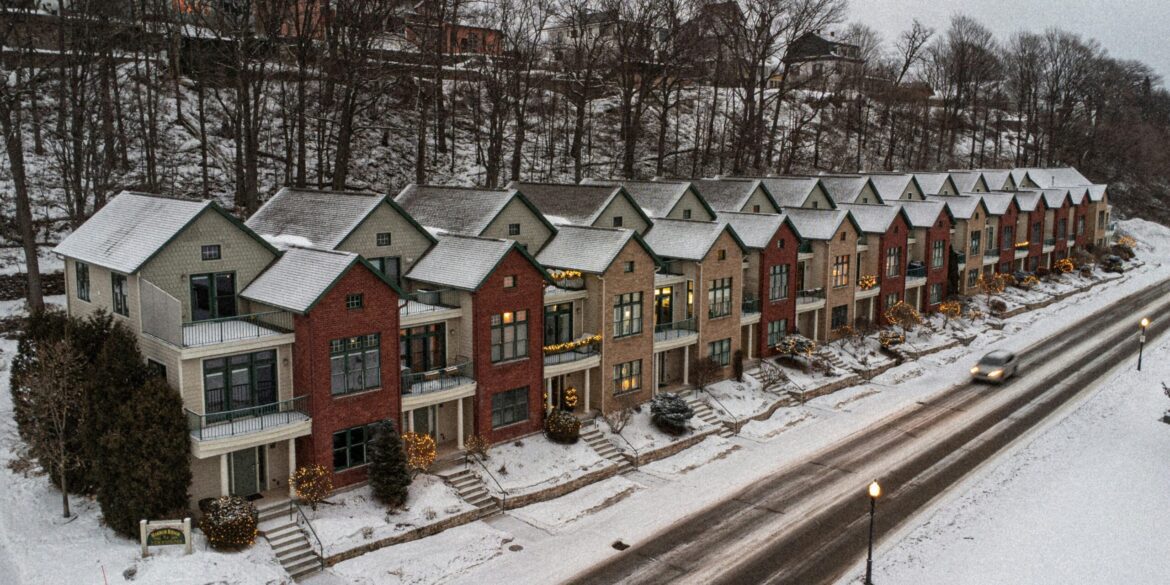After years of frenetic activity that sent home values soaring to record levels, the U.S. housing market is showing early signs of slowing. As of late September 2025, a combination of softer demand, shifting affordability, and modest increases in inventory is reshaping conditions for buyers, sellers, and lenders. Analysts suggest that what lies ahead may be a period of more balanced—if uneven—adjustment across different regions of the country.
Recent housing data underscores the moderation. National home price growth has decelerated to just 1.4 percent year-over-year as of July 2025, a sharp contrast to the double-digit gains recorded during the pandemic-era boom. That growth rate now trails prevailing inflation, indicating that housing is no longer appreciating as quickly in real terms. In fact, several major metro areas have already tipped into outright declines, with some cities reporting price drops of three to four percent compared to a year earlier. These corrections are emerging in markets that had been among the most supply-constrained, suggesting that a gradual unwinding of pandemic-era froth may be underway.
At the same time, the aggregate value of the U.S. housing stock has reached new highs. According to industry estimates, American homes are collectively valued at approximately $55.1 trillion. That figure reflects the accumulation of years of appreciation, particularly in high-value states like New York and Massachusetts, but the picture is not uniform. Markets in California, Texas, and Florida—once seen as nearly unshakable engines of housing growth—have shown signs of retreat, with values slipping modestly as affordability constraints take hold and inventories edge higher.
Supply remains one of the defining storylines. Nationally, active listings are still about 13 percent below pre-pandemic averages, which continues to exert some upward pressure on prices. However, the gap is narrowing. A dozen states have now surpassed their pre-pandemic levels of inventory, pointing to a growing divergence in market dynamics. In parts of the Midwest and Northeast, supply is now closer to balanced, while in Western states, tight inventories persist despite softening demand. This uneven distribution of available homes means national averages often obscure sharp local differences.
Read Also: https://toplistings.com/mortgage-rates-show-slight-increase-potential-impact-on-buyer-behavior/
From the perspective of affordability, the picture remains challenging. Mortgage rates, while off their recent highs, remain significantly above the ultra-low levels that fueled the housing surge of the early 2020s. Combined with still-elevated home prices, borrowing costs continue to discourage first-time buyers and those at the margins of eligibility. Lenders report a cooling in application volumes, particularly in high-cost urban markets where affordability pressures are most acute. Some analysts believe that further cuts by the Federal Reserve may be necessary to restore momentum, especially if inflation continues to ease and policymakers feel comfortable loosening monetary conditions.
For homeowners and buyers, the shifting environment carries both risks and opportunities. Sellers accustomed to the bidding wars of just a few years ago may find the current climate more sobering, as listings linger longer and price reductions become more common. Industry experts recommend recalibrating expectations and working closely with local agents to understand hyper-local dynamics, which increasingly diverge even within the same metro area. Buyers, meanwhile, may find themselves with more negotiating power than in recent memory, particularly in markets where supply is rising and demand has cooled. Those looking to reenter overheated markets could benefit from further softening, though patience and careful timing remain essential.
Overall, the current cooling phase reflects a market in transition rather than in collapse. Unlike the sharp downturns seen in past housing cycles, today’s adjustments are more tempered, with fundamentals like employment and household formation still supportive of long-term demand. The months ahead will likely reveal whether the housing market settles into a sustainable balance or faces sharper corrections if economic headwinds strengthen. For now, the frenzy has subsided, leaving room for a slower, more deliberate recalibration of America’s housing landscape`.

